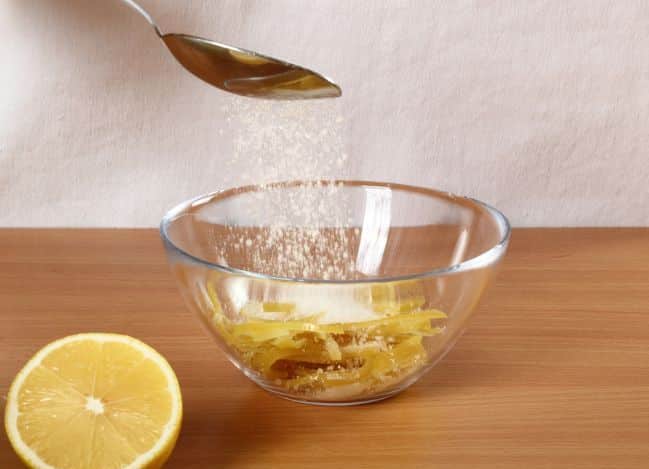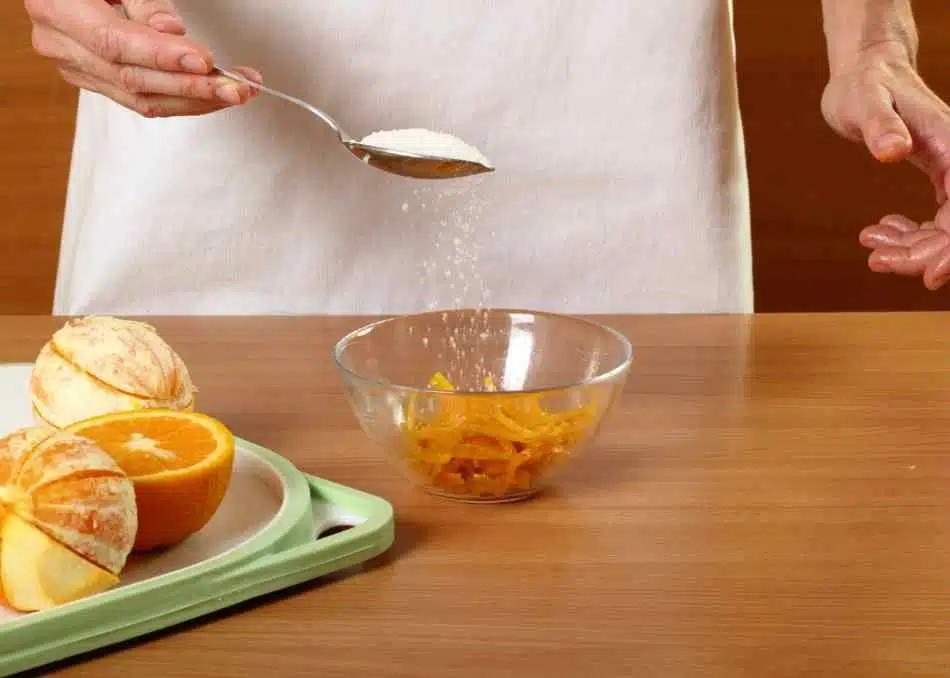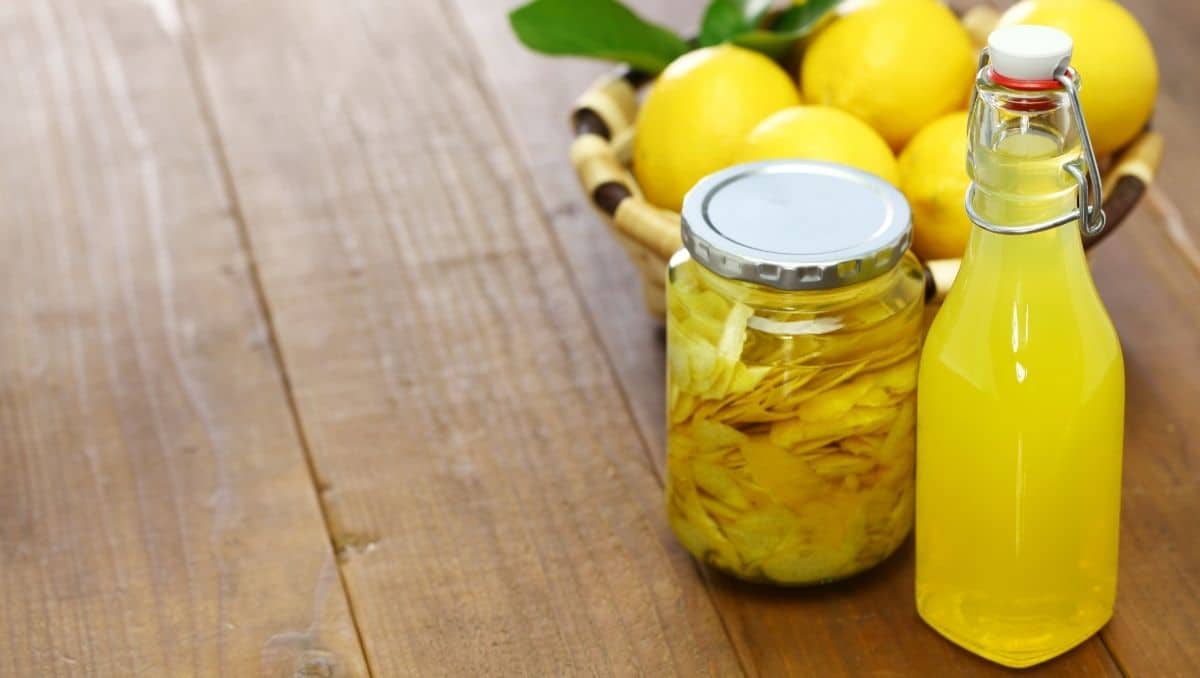Oleo Saccharum is one of the most elegant ways to bring the flavor of citrus fruit into your cocktails.
You can make all kinds of Oleos - whether it is oranges, limes, lemons, grapefruits, oranges, you name it. In our case, we make a lemon and Blood Orange Oleo which is an excellent combination to get some extra depth.
The result is an intensely flavored mixture of sugar and citrus oils that brings a beautifully balanced tartness to your drinks.
What is Oleo Saccharum?
The term Oleo Saccharum is Latin and literally translates to oil-sugar. And those two elements are all you need to create this intense and flavorful citrus syrup - except, of course, for the citrus component, which contains the oils.
To make the syrupy cocktail ingredient, you use sugar to extract essential oils from the peels of citrus fruits. The resulting sweet liquid is very aromatic and full of citric notes.
In general, you can make this with any citrus fruit. The most common are lemon, lime, and orange peels. Sometimes, a combination of those fruits is used to create an even more complex-tasting syrup.
History - The base of a goof punch
If you're an avid home cook, you know that, for making delicious soup, one needs a perfect stock as a base. And traditionally, Oleo Saccharum used to be the "stock" for a punch cocktail.
Acclaimed bartender Jerry Thomas mentioned using it in his book "The Bartender's Guide" from 1862:
"To make a punch of any sort in perfection, the ambrosial essence of the lemon must be extracted."
Jerry Thomas
But Jerry Thomas didn't invent this procedure. Punch cocktails date back to the 16th and 17th centuries. The first written mention of using Oleo Saccharum in punches is from 1670.
The most significant difference to today's version is in the way of making it. Back then, people used to rub a piece of sugar on the rind of lemons. Thus, the sugar broke the vessels in the peel that contained the essential oils, extracting them.
The problem is that today's sugar is too soft to do that. No matter the product or brand, the sugar will crumble immediately and will only be lightly scented. So, what to do instead?
How to make Oleo Saccharum
The main ingredients to make Oleo Saccharum are citrus peels and sugar. As we're using the skin of the fruits, you should best choose organic and untreated products.
Lemons are the number one most common citrus fruit for making these kinds of syrups. In our recipe, we mix them with blood-orange peels to create a deeper, more complex citrus flavor in the resulting syrup.

If you want to make an Orange Oleo Saccharum or Lime Oleo, both work exactly the same way as described in the recipe below. Simply use different fruit rinds and follow the same steps.
Before starting, wash and peel your fruits. You only want the peel, not the white pith, as that will add bitter notes to your syrup. Then put the fruit peels into a jar or bowl.
Next, coat all the peels with sugar. The sugar will soak up the oils and bring those fragrant notes into our syrup. Try to maximize the contact of sugar and peel to get the most flavor out of your citrus ingredients.

The sugar and peel mixture has to sit overnight to extract as much essential oil as possible. And the next day, you will see some precious citrus oil floating around.
The liquid you see by then is pure Oleo Saccharum, packed with flavor. Strain it into a sterilized bottle and store it in the fridge.
To get the most out of the leftover sugar, peel, and oil mix, add two to three tablespoons of boiling water. Stir the whole mixture and strain the resulting liquid into the same bottle.
How to Use This Citrus Syrup in Cocktails
One option is to use your freshly made Oleo Saccharum instead of regular simple syrup. That will add an extra kick of citrus to your cocktails.
Don't use it as an add-on to an existing recipe because citrus-flavored sweetener is a form of syrup. Therefore, adding it to an already balanced drink will turn it into an overly sweet concoction.
Depending on the type of Oleo you made, there are various possibilities of how to use it. Lime Oleo Saccharum is fabulous in a Ti' punch cocktail, Orange Oleo, on the other hand, is an excellent sweetening component in an Old Fashioned.
In the latter combination, you substitute the classic sugar and water (or simple syrup) with 0.25oz of your freshly made orange-flavored sweetener.
A perfect way to use our homemade lemon-flavored Oleo Saccharum is in a French 75 cocktail. This lemony Champagne cocktail will be even tarter and more citric when using Oleo instead of a regular sweetener.
Alternatively, you can use it in non-alcoholic drinks like fresh lemonade mixed with lemon juice and soda water.

Ingredients
- 1 ½ cups Lemon and blood orange peels
- ⅔ cups Caster sugar
- 2 tbsp Boiling water
- 1 tbsp Vodka - (optional)
Instructions
- Peel your lemons and blood oranges. Make sure to remove as much of the white pith as possible.
- Add all peels into a bowl and cover them with caster sugar. Gently mix peels and sugar to maximize contact between them.1 ½ cups Lemon and blood orange peels, ⅔ cups Caster sugar
- Let the mix sit overnight to extract as many oils as possible.
- The next day, strain the liquid from the bowl into a sterilized bottle.
- Add boiling water to the leftover peels and sugar mix. Rinse and strain again in the storage bottle.2 tbsp Boiling water
- The fresh Oleo Saccharum will last up to two weeks in the fridge. If you want it to last longer, add a bit of Vodka to it, as the alcohol is preserving.1 tbsp Vodka

Tried it with blood orange and without, loved the first one way more. So, thanks for the great recipe